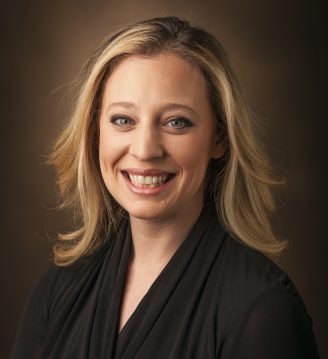It’s for certain smokers and ex-smokers. It’s not painful. It could save your life.
Lung cancer is the most lethal cancer in the United States, even though other cancers are more common. That’s because lung cancer is usually not detected until it has spread, making it difficult to treat.
A new lung screening program, however, aims to detect lung cancer when it’s limited to a tiny mass. People whose lung cancer is caught early have an excellent chance of ridding themselves of this disease through surgery – in a few cases, without having chemotherapy or radiation, which are typical parts of treatment for lung cancer that is diagnosed at a later stage.
Radiologist Kim Sandler, M.D., and Alexis Paulson, radiology nurse practitioner and clinical coordinator of the Vanderbilt Lung Screening Program, answer common questions they hear about lung cancer screening:
Who should get screened for lung cancer?
People at the highest risk for lung cancer should be screened. That means those ages 50 to 80 who are current smokers, or who quit smoking within the past 15 years, and who have a 20 pack-year history of smoking.
A 20 pack-year smoking habit means smoking a pack of cigarettes per day for 20 years or equivalent exposure – for example, smoking a half pack per day for 40 years. Paulson helps smokers determine their pack-year history when they meet with her prior to the screening.
People who have not smoked in more than 15 years are not considered high risk for lung cancer, Sandler said: “When you quit smoking, your risk of lung cancer goes down significantly.”
Why should I get a lung cancer screening?
The screening is meant to catch lung cancer in its early stages, so it can be treated more successfully.
It’s designed according to the findings of a major lung cancer study published in 2011 in the New England Journal of Medicine. The study was conducted at Vanderbilt University Medical Center and 32 other academic centers throughout the United States. It screened more than 50,000 people at high risk for lung cancer, some using conventional X-rays and some with CT scans. The study found that the patients receiving annual CT scans were 20 percent less likely to die during the six-year period of the study than those who were scanned with conventional X-rays because the CT scan detected nodules earlier.
The CT scan used in Vanderbilt’s screening can detect lung nodules measuring just 1 to 2 mm, the thickness of a grain of rice.
If the scan finds such a nodule in someone’s lungs, Sandler recommends follow-up screening to monitor it. If the mass grows larger than 6 mm, it’s time for more frequent scans or for a biopsy to learn if the nodule is cancerous or benign.
“The hope is when we’re seeing something that small, that’s the only sign of disease,” Sandler said.
Are lung cancer screenings covered by insurance?
This varies. People should check with their insurer for details of their coverage.
Can you pay out of pocket if not covered?
While not recommended by the guidelines, people who do not meet the high-risk criteria for lung cancer but have an order from their provider can still be screened, and self-pay for the annual screening. Most likely, the chance of a false-positive result, unnecessary follow-ups and treatment are higher for these patients than the chance of having lung cancer. Paulson meets with patients to discuss their risks and the possible benefits of screening for them individually before they have the screening.
How do you get tested for lung cancer? I don’t like pain, needles or claustrophobic machines.
The screening uses a computed tomography (CT) scan. The technology stacks multiple X-rays together to create a detailed image of the lungs.
Paulson describes the scan: Patients, fully clothed, lie on their back in the scanner, which is shaped like a donut – head and legs stick out on either end and only the torso is enclosed in the machine. They must lie still for about 10 seconds. There’s no needle, no pain, and no loud noises. People get their results within two business days.
Paulson meets with patients at the beginning of their scan appointment, to talk through their smoking history and the risks and benefits of the scan. Patients have their meeting and scan in one visit. The whole process usually takes less than one hour.
If the scan finds an abnormality, what happens next?
Most – about 90 percent – of people screened at Vanderbilt get a negative test result, meaning their scans show no evidence of lung cancer. The imaging team comprises six radiologists specially trained in reading lung scans, so Vanderbilt’s program has a particularly low number of false positives (a scan that indicates cancer where there is none). About 4 out of 100 will have suspicious nodules that should be scanned again within a few months, Paulson said. (Of those, only one in four will likely have cancer). For those with suspicious results, the next step is typically more imaging tests, Paulson said; it’s usually not a biopsy or an invasive procedure.
How often am I supposed to get screened?
People who meet the criteria for screening should continue to get a scan once every year until they are either older than 80 or have been smoke-free for at least 15 years.
For those whose screenings reveal a lung nodule, the team may recommend coming back for another imaging test in less than one year.
Do I have to quit smoking?
Patients do not have to quit smoking to be screened, Paulson said, although a newer study has shown that those who quit at the time of starting lung screening can potentially double their six-year survival rate from lung cancer compared with those who continue smoking, Paulson said.
The lung screening program encourages smokers to quit and offers support for those ready to break their tobacco habit. Quitting lowers the risk of lung cancer, Sandler said, even for people who have smoked for decades.
Lung cancer screening is not about guilt, Sandler said. Rather, it’s meant to save lives by finding any cancer early, when it’s easiest to treat.

Getting connected
Getting a lung screening at a Vanderbilt University Medical Center location enrolls you in yearly screenings and gives you access to support that can help you quit smoking. Vanderbilt radiologists are specially trained in reading lung CT scans, so they produce fewer false positive readings than lung screenings at other locations. Talk with your health care provider about whether lung screening is right for you. If you do not have a health care provider but would like to be screened, call 615-205-9526 for assistance.


